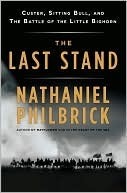More on this book
Community
Kindle Notes & Highlights
Read between
April 7 - April 7, 2022
Instead of an effort to defend innocent American pioneers from Indian attack, the campaign against the Sioux and Cheyenne in the spring of 1876 was an unprovoked military invasion of an independent nation that already happened to exist within what came to be declared the United States.
was an invasive species of empire.
wicasa wakan: a holy man with an unusual relationship with the Great Mystery that the Lakota called Wakan Tanka.
Late in life, the Cheyenne Wooden Leg admitted that living on the reservation had its compensations. “It is pleasant to be situated where I can sleep soundly every night, without fear that my horses may be stolen or that myself or my friends may be crept upon and killed.” And yet, when he looked back on his life as a young warrior, “when every man had to be brave,” he knew when he had been the most contented and fulfilled. “I wish I could live again through some of the past days,” he said, “when it was the first thought of every prospering Indian to send out the call: ‘Hoh-oh-oh-oh, friends:
...more
When Benteen told his father, a former slave owner, that he was going to fight for the Union, the old man told his son that he hoped “the first god damned bullet gets you.”
he’d lost his left eye in a hunting
Some are remembered because they transcended the failings of their age. Custer is remembered because he so perfectly embodied those failings. As Herman Melville wrote of that seagoing monster of a man Captain Ahab, “All mortal greatness is but disease.”


